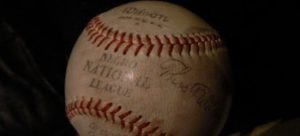
*The Negro National League in baseball was established on this date in 1920.
Led by Rube Foster, owner and manager of the Chicago American Giants, the NNL was established by a coalition of team owners at a meeting in a Kansas City YMCA. The new league was the first African American baseball circuit to achieve stability and last more than one season. At first, the league operated mainly in midwestern cities, ranging from Kansas City in the west to Pittsburgh in the east; in 1924, it expanded into the south, adding franchises in Birmingham and Memphis.
Two east coast clubs, the Hilldale Club of Darby, Pennsylvania, and the Bacharach Giants of Atlantic City, were affiliated with the NNL as associate clubs from 1920 to 1922 but did not compete for the championship. In 1923 they and four other eastern teams formed the Eastern Colored League (ECL) and signed many of the top players of the NNL. They included John Henry Lloyd, Biz Mackey, George Scales, George Carr, and Clint Thomas, and signing Oscar Charleston and Reuben Currie. The conflict between the two leagues ended in 1924 when they agreed to respect each other's contracts and arranged for the Colored World Series between their champions.
The NNL survived controversies over umpiring, scheduling, and what some perceived as league president Rube Foster's disproportionate influence and favoritism toward his team. The NNL finally fell apart in 1931 under the economic stress of the Great Depression. The Negro American League, founded in 1937, included several of the same teams that played in the original Negro National League, which would eventually carry on as the western circuit of black baseball. A separate Negro National League was organized in 1933 but became concentrated on the east coast.
Champions from the second NNL and the NAL competed from 1942 through 1948. Also, in 1933, the Black teams began an all-star game competition. The game was known as the East-West and was played each summer at Chicago's Comiskey Park. This game was considered more important than the World Series in the Black community. The East-West game annually attracted between 20,000 and 50,000 fans.